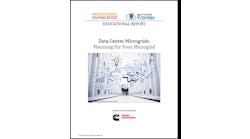ARPA-E is offering $30 million for projects that can ready the electric grid for disruptive energy technologies, with an eye toward preparing for more microgrids, renewables and distributed energy.
which appear to bring both complication and benefits to the US energy system.withRenewable energy creates uncertainty and variability on the grid because it is intermittent. But there may be ways to use this uncertainty to benefit the grid with the right control and integration technologies, according ARPA-E.
The agency hopes to develop disruptive energy technologies for real-time management of transmission and distribution. ARPA-E calls this effort the Network Optimized Distributed Energy Systems, or NODES program.
The program explores architectures for running the new electric grid — from having independent system operators manage the entire grid top-to-bottom, to running the grid as a network of microgrids.
The NODES program plans to leverage advances in computing and data communications to achieve its goals. The overarching goal is to improve the grid’s efficiency and reliability and make renewables 50 percent of U.S. supply.
ARPA-E is particularly interested in funding three kinds of technology:
- Synthetic Frequency Response Reserves
- Synthetic Regulative Reserves
- Synthetic Ramping Reserves
Ideas that still require proof-of-concept R&D will be eligible for funding, as will those for which some proof-of-concept demonstration already exists.
Applications will be considered from individuals, educational institutions, for-profit and not-profit organizations, and consortiums. Any work by foreign entities must be performed by subsidiaries or affiliates incorporated in the United States (including U.S. territories).
The agency seeks proposals that share part of the cost. Large businesses are encouraged to contribute more than 20 percent of the project costs, while small businesses, non-profits and educational institutions may offer less.
ARPA-E may issue one, multiple, or no awards. Individual awards may vary between $250,000 and $10 million. The period of performance for funding agreements may not exceed 36 months. ARPA-E expects the start date for funding agreements to be December 2015, or as negotiated.
Concept proposals are due by March 20. Full proposal due date is still yet to be determined. The funding opportunity number is DE-FOA-0001289
More about this energy efficiency request
Follow the latest in disruptive energy technologies by subscribing to the free Energy Efficiency Markets Newsletter.






